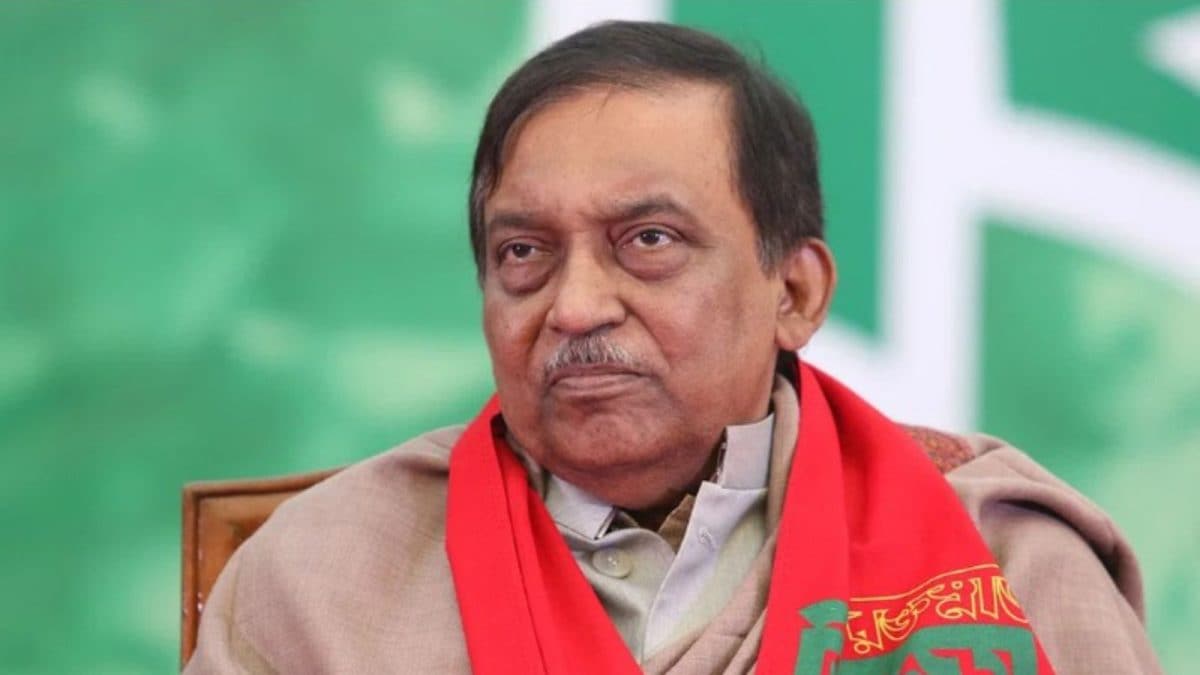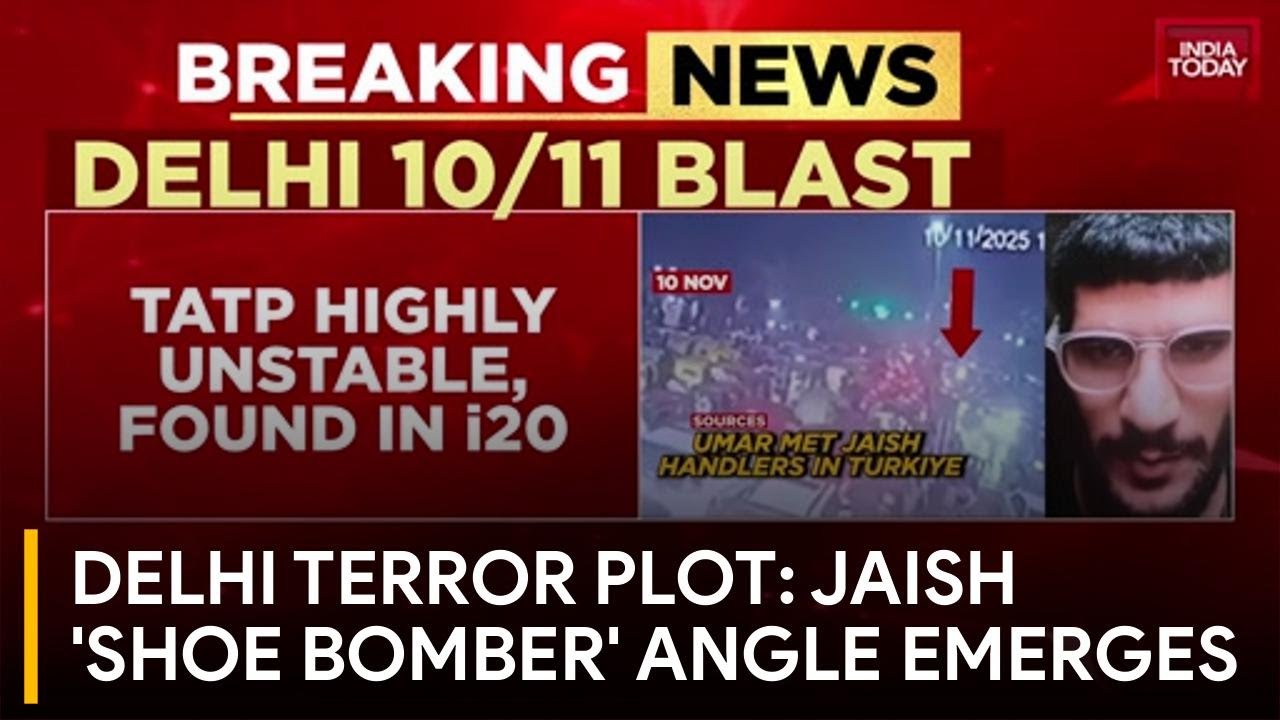ARTICLE AD BOX
Last Updated:November 17, 2025, 12:40 IST
Nationwide marches, tear gas in Mexico City and a surge of public anger have thrust the country’s security crisis back into focus

Thousands in Mexico marched under Generation Z, protesting crime and corruption over Mayor Carlos Manzo's killing. (Pic: AP)
The wave of “Gen Z protests" that defined parts of Asia and Europe this year has now reached Mexico. What began as an online call by a youth-led group has spiralled into a nationwide display of frustration over crime, corruption and the state’s inability to curb violence. Over the weekend, thousands marched across the country, with demonstrations reported in around 50 cities.
The most visible confrontation unfolded in Mexico City, outside the National Palace, the residence and office of Mexican President Claudia Sheinbaum.
Although the demonstrations were largely peaceful throughout the day, tensions flared by evening. Hooded protesters tore down metal barricades, prompting riot police to deploy shields and tear gas. The clashes left over a hundred people injured and sparked renewed debate about Mexico’s worsening security landscape just a year into Sheinbaum’s presidency.
What Sparked The Protests?
The immediate trigger was the assassination of Carlos Alberto Manzo Rodríguez, the mayor of Uruapan in the western state of Michoacán. Manzo was shot dead on 1 November during a Day of the Dead event, in full public view. He had taken a hard line against drug cartels and had publicly appealed for greater federal support in combating criminal networks.
His killing followed the murder of another Michoacán mayor, Salvador Bastidas of Tacámbaro, earlier this year in June, adding to the region’s record of high-profile political violence. For many Mexicans, Manzo’s killing symbolised a broader collapse of state authority, a point echoed by protesters who carried his trademark straw hat and chanted in his memory. But his widow distanced herself from the demonstrations, signalling discomfort with the political direction the mobilisation was taking.
In the days that followed, a group calling itself “Generation Z Mexico" circulated a manifesto online urging nationwide marches. The group described itself as non-partisan and representative of young people “fed up with violence, corruption and abuse of power". The call quickly travelled beyond youth circles, swelling into a multi-city mobilisation powered by social media.
Generation Z typically refers to people born between 1997 and 2012.
Why Are These Being Called ‘Gen Z’ Protests?
Like similar movements in other countries this year, the protests in Mexico borrowed the language, symbols and organisational style associated with Gen Z activism. The pirate-skull flag, which has travelled from protests in Asia to Latin America, appeared prominently. The flag has origins in Manga and represents defiance against corrupt authority.
Marchers included students and young professionals who spoke of insecurity, corruption and a sense that authorities rarely deliver justice.
But the crowds were not exclusively young. AP reported that the march in Mexico City ended with significant backing from older supporters of opposition parties. Doctors, business owners, activists and retirees joined students and young professionals, giving the movement a broader profile than its branding suggests.
Some Gen Z influencers who initially supported the call later withdrew, even as prominent older political figures, including former President Vicente Fox and businessman Ricardo Salinas Pliego, expressed their support online.
The movement also fits into a wider pattern: Gen Z protests in other countries this year, particularly in Nepal, have pushed back against corruption, democratic backsliding and inequality, at one point even leading to the resignation of Nepal’s prime minister.
What Happened At The National Palace?
Mexico City saw the most intense confrontations. Reuters reported that hooded protesters pulled down fencing around the National Palace, prompting riot police to intervene with tear gas. AP described protesters attacking police with “stones, fireworks, sticks and chains" and grabbing shields and equipment during the clashes.
The city’s public safety secretary, Pablo Vázquez, said around 120 people were injured, roughly 100 of them police officers, with dozens requiring hospital treatment. About 20 protesters were hurt as well, and authorities made 20 arrests on charges including assault and robbery. Another 20 people were detained for administrative violations.
Beyond the violence, the slogans captured the political temperature. Some protesters chanted “Out, Morena," targeting the ruling party, while others shouted that “the government killed Carlos," reflecting their belief that Manzo’s death stemmed from wider state failure.
What Are The Protesters Demanding?
Although the demonstrations were triggered by the killing of Uruapan Mayor Carlos Manzo, the marches quickly broadened into demands addressing Mexico’s wider crisis of violence, impunity and corruption.
- More security and stronger state action against crime
- Stronger government response to rising violence, corruption and abuse of power
- Resignation of President Claudia Sheinbaum
- A shift away from the current security policy
Why Is Crime Such A Central Issue In Mexico?
Mexico has grappled with severe criminal violence for decades, driven largely by powerful cartels and armed gangs. According to the Council on Foreign Relations (CFR), the country “faces a crisis of kidnappings, disappearances, and other criminal violence that has left over 30,000 people dead each year since 2018." These chronic levels of violence, combined with persistent impunity and longstanding allegations of corruption and rights abuses within the state’s own security apparatus, have deepened public frustration across regions.
The roots run deep. In 2006, the federal government sent the military to confront drug cartels. Some experts believe this militarised approach ended up worsening the conflict rather than weakening criminal groups. This history of unsuccessful crackdowns is one of the reasons President Claudia Sheinbaum has resisted calls for a more forceful, military-led approach.
Instead, she has pledged continuity with her predecessor’s “hugs, not bullets" strategy, which emphasises intelligence-led investigations over direct military confrontation. While the approach has its supporters, many Mexicans see it as inadequate against heavily armed cartels.
How Has President Sheinbaum Responded?
Sheinbaum’s approval ratings remain high, above 70 per cent, but the recent string of high-profile killings has brought fresh scrutiny of her security strategy. She has repeatedly questioned the authenticity of the protests, calling the mobilisation “inorganic" and alleging it was “paid for". Her government believes right-leaning opponents and bots helped promote the marches. She also claimed that the movement was “promoted from abroad" against her administration.
Despite the criticism and the scale of the protests, Sheinbaum has not indicated any major shift in her security policy.
What Comes Next?
The protests have tapped into long-standing unease over Mexico’s security trajectory. They signal a new willingness among both younger Mexicans and older generations to challenge the state over crime, corruption and impunity. In several regions, local anger sits atop years of cartel violence and political killings, conditions that give the movement emotional force far beyond the initial trigger.
Whether the unrest hardens into a sustained movement or ebbs after this initial outburst will depend on how the government responds, and whether further incidents re-ignite anger.

Karishma Jain, Chief Sub Editor at News18.com, writes and edits opinion pieces on a variety of subjects, including Indian politics and policy, culture and the arts, technology and social change. Follow her @kar...Read More
Karishma Jain, Chief Sub Editor at News18.com, writes and edits opinion pieces on a variety of subjects, including Indian politics and policy, culture and the arts, technology and social change. Follow her @kar...
Read More
First Published:
November 17, 2025, 12:40 IST
News explainers Mexico Erupts In ‘Gen Z’ Protests: What Triggered The Unrest?
Disclaimer: Comments reflect users’ views, not News18’s. Please keep discussions respectful and constructive. Abusive, defamatory, or illegal comments will be removed. News18 may disable any comment at its discretion. By posting, you agree to our Terms of Use and Privacy Policy.
Read More

 1 hour ago
7
1 hour ago
7









 English (US) ·
English (US) ·